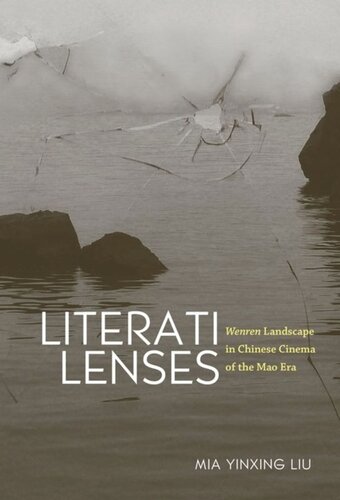

Most ebook files are in PDF format, so you can easily read them using various software such as Foxit Reader or directly on the Google Chrome browser.
Some ebook files are released by publishers in other formats such as .awz, .mobi, .epub, .fb2, etc. You may need to install specific software to read these formats on mobile/PC, such as Calibre.
Please read the tutorial at this link: https://ebookbell.com/faq
We offer FREE conversion to the popular formats you request; however, this may take some time. Therefore, right after payment, please email us, and we will try to provide the service as quickly as possible.
For some exceptional file formats or broken links (if any), please refrain from opening any disputes. Instead, email us first, and we will try to assist within a maximum of 6 hours.
EbookBell Team

5.0
30 reviewsChinese cinema has a long history of engagement with China’s art traditions, and literati (wenren) landscape painting has been an enduring source of inspiration. Literati Lenses explores this interplay during the Mao era, a time when cinema, at the forefront of ideological campaigns and purges, was held to strict political guidelines. This is a particularly intriguing period for the study of landscape in film, for while a film’s script was under constant and multifaceted scrutiny, its landscape, a silent backdrop in the final production, tended to slip past censorial eyes.
Author Mia Yinxing Liu examines literati landscape through four films: Li Shizhen (1956), Stage Sisters (1965), Early Spring in February (1963), and Legend of Tianyun Mountain (1979). By close readings of these “problematic,” even “poisonous” films (official criticisms from Party media), she sheds light on how landscape offered an alternative text that could operate beyond ideological constraints and provide a portal for smuggling interesting discourses into the film. On the one hand, allusions to pictorial traditions associated with a bygone era inevitably took on different significances and even transformative meanings in the context of Mao-era cinema. On the other, unlike derivative citations or reverent homages, cinematic engagement with literati landscape endowed films with creative and critical space, as well as political poignancy. Liu not only identifies and investigates how the conventions, motifs, topoi, and aesthetics of traditional literati landscape art are reinvented and mediated on multiple levels in cinema, but also explores how post-1949 Chinese filmmakers configure themselves as modern intellectuals in the spaces forged among the vestiges of the old. In the process, she deepens her analysis, illuminating notions of utopia, monumentality, history, memory, representation, and re-appropriation. Landscape, she suggests, can be seen as an allegory of human life, a mirror of the age, and a commentary on national affairs.